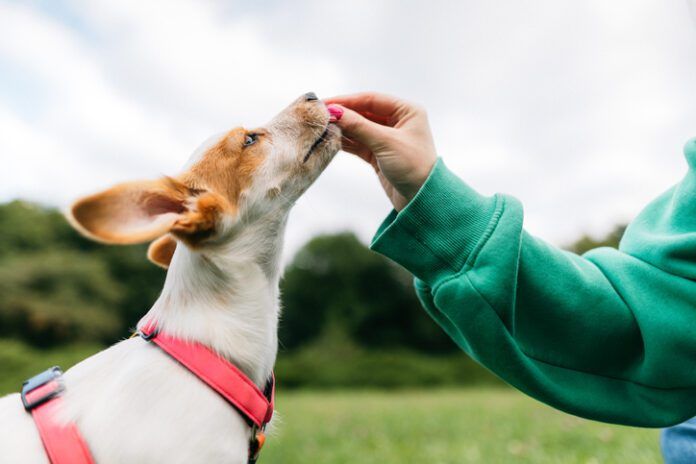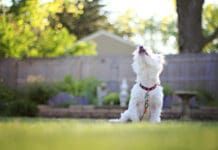When your dog is successful, reward your dog with the “two-treat method”:
- Have two cookies in your hand
- Give your dog one cookie from your hand while your praise enthusiastically.
- Back up so that you end up farther away from the distraction, so that your dog is likely to run back to you instead of heading to the distraction.
- Give her a second cookie when she is back with you again. What a deal!
- Your reward should always be higher value than your distraction.
Don’t worry if your dog fails. Failure is a natural part of learning. Remain calm and resist the urge to yell “no” or physically move your dog around. Instead, follow this procedure:
- Go to the distraction. Pick it up. Talk to your dog about it. Admire it together.
- And then put it back.
- Go to the same place you were before and ask the dog for the behavior again.
- If your dog fails again, make the task just a bit easier.
- For example, you might stand closer to your dog, or move the distraction a bit farther away. Or if you asked for a stay, you might change your duration from five seconds to three seconds.
If your dog fails three times in a row, stop. The task is too hard for your dog. Go back to the previous step or find a way to make it easier for your dog. Ask yourself the following questions:
- Did you use a low enough value of distraction?
- Are you using a higher value reward?
- Does your dog KNOW that you have a higher value reward?
- And this is the big one: are you SURE that your dog knows the base behavior in that environment when no distraction is present? If your dog does not know the command, you can repeat if till the cows come home, but you will not achieve success.
Each training session should be 5 minutes long OR LESS. Training should be fun, so don’t keep going unless both you and your dog are enjoying it. You can repeat a lesson up to (but no more than) three times in a day. Ten minutes a day is an excellent target.
Each training session should focus on one behavior only. If you’d like to work on another behavior, do so in separate training sessions. Each lesson should be repeated until your dog is successful at least 80% of the time. In addition, your dog should be bright and eager to train. If she’s not having fun, that training session has not been successful, no matter how well she performed!
For more advice on training your dog listen anytime, anywhere, purchase Beyond the Back Yard from Whole Dog Journal.






